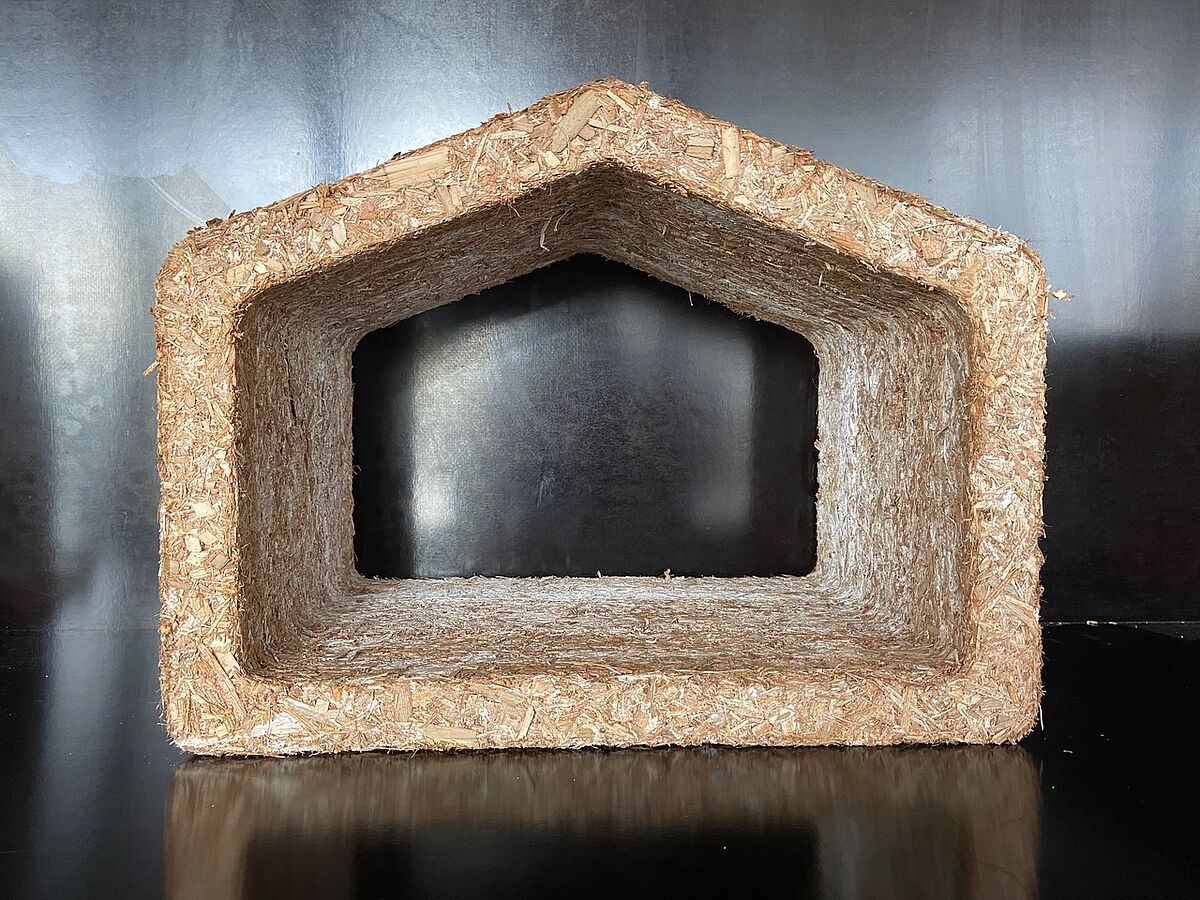Lightweight construction from Typha plants in circular architecture: the "Green Container” example

Background:
The joint project "Lightweight construction from Typha plants in circular architecture: the ‘Green Container’ example” bridges the gap between paludiculture and the construction sector.
The cultivation of cattail (Typha spp.) is a promising utilisation option for rewetted fens. Different parts of the plant can be used in a variety of ways. Its use as a renewable raw material for ecological construction and insulation materials is particularly interesting in terms of added value and market demand.
Project goals:
The University of Greifswald provides paludiculture biomass for "Green Container" from its 10 ha cattail practice cultivation near Neukalen / Mecklenburg-Vorpommern (MV). The project investigates the harvest, biomass quality and the ability to influence the properties of the raw material. In particular, the focus is on determining realistic raw material quantities from practical cultivation and on avoiding flowering (i.e. the formation of seed heads), which is being tested in a field experiment. A GIS landscape analysis is used to provide a reliable estimate of the area potential for cattail paludiculture in MV and the possible future availability of raw materials.
At the TH OWL, Prof. Manfred Lux's Department of Building Materials and Construction has developed various fibre composites from Typha plants in recent years. Based on these findings, further research is being carried and for the first time biomass from specifically cultivated Typha plants from paludiculture is processed. The aim is to create a first small one-room building, possibly a tiny house, which has both load-bearing and insulating properties in the building sections on one level. The "Green Container" will be developed step by step. In initial test series, the fibre composite material is further developed using test specimens. Finally, 1:1 test specimens will be produced which can be constructively joined in a plug-in system. At the end of the project, the demonstrator for a "green container" will be produced, which can replace energy-intensive metal containers in the future.
In the future, the Green Container can go on tour with travelling exhibitions and be used for other temporary exhibition purposes. Ultimately, it will then be used as a small building and demonstrate how rooms and buildings can be created from paludiculture biomass such as the Typha plant in a contemporary and, above all, circular way.
Title:
WIR! – Plant3: Lightweight construction from Typha plants in circular architecture: the "Green Container” example
Funding:
Plant3 alliance in the pilot programme “Innovation and structural change” (German: WIR! – Wandel durch Innovation in der Region), Federal Ministry of Education and Research (BMBF), FKZ: 03WIR2225B
Duration:
01.10.2023-30.09.2025
Projectmanagement:
Project Management Jülich (PTJ)
Leader of joint project:
Prof. Manfred Lux, University of Applied Sciences and Arts Ostwestfalen-Lippe, Department of Architecture, Building Materials and Construction
Leader of subproject:
Processing of subproject:
Dr. Sabine Wichmann, Nora Köhn
Consortium:
- University of Greifswald, Chair of Landscape economics (Dr. Sabine Wichmann)
- University of Applied Sciences and Arts Ostwestfalen-Lippe, Department of Architecture, Building Materials and Construction (Prof. Dipl.-Ing. Manfred Lux)
Sponsored by:




